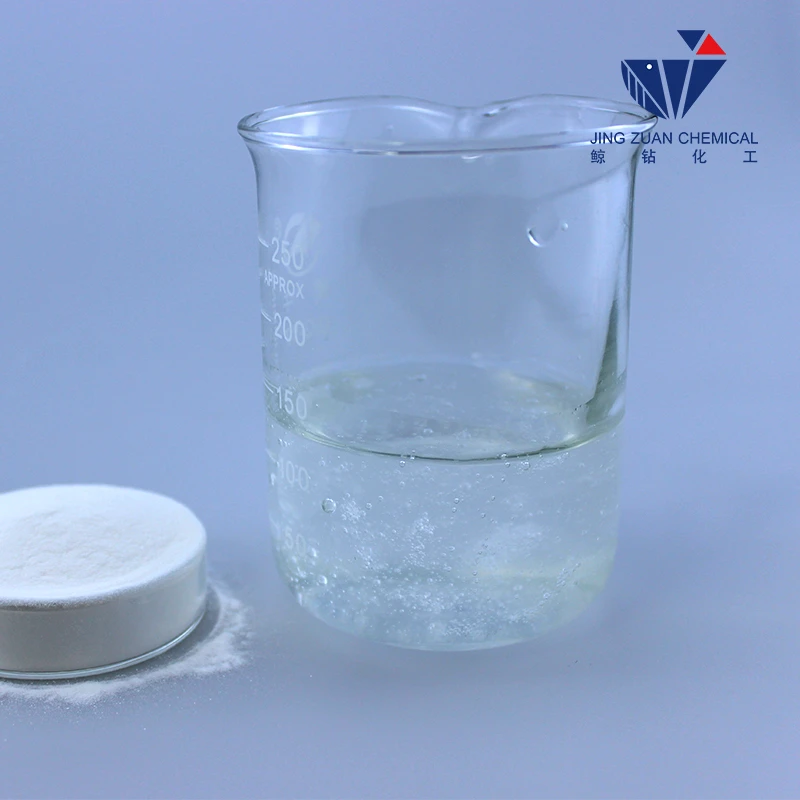
Aug . 16, 2024 21:39 Back to list
Exploring the Effects of HPMC on Viscosity in Various Applications and Solutions
Understanding HPMC Viscosity Key Factors and Applications
Hydroxypropyl Methylcellulose (HPMC) is a widely used cellulose derivative known for its unique properties, especially its viscosity. Understanding HPMC viscosity is essential for various industries, including pharmaceuticals, food processing, and construction. This article aims to explore the factors influencing HPMC viscosity and its practical applications.
What is HPMC?
HPMC is a non-ionic, water-soluble polymer derived from cellulose. It is synthesized through the modification of cellulose, which involves the substitution of hydroxyl groups with hydroxypropyl and methoxy groups. The degree of substitution and the molecular weight of HPMC significantly influence its physicochemical properties, including viscosity.
Factors Affecting HPMC Viscosity
1. Molecular Weight The molecular weight of HPMC plays a crucial role in determining its viscosity. Higher molecular weight HPMC tends to exhibit higher viscosity due to increased chain entanglement and interaction within the solution. Manufacturers can customize the viscosity of HPMC by selecting the appropriate molecular weight during production.
2. Concentration The concentration of HPMC in solution directly affects viscosity. As the concentration increases, the viscosity of the solution rises exponentially. This phenomenon is attributed to the increased number of polymer chains in the solution, leading to higher friction and resistance to flow.
3. Temperature Temperature changes can significantly impact HPMC viscosity. Typically, as the temperature increases, viscosity decreases due to the reduced interaction between polymer chains and increased mobility. Conversely, at lower temperatures, HPMC solutions tend to exhibit higher viscosity.
4. pH The pH level of the solution can also influence the viscosity of HPMC. While HPMC is relatively stable across a broad pH range, changes in pH can alter its solubility, affecting how the polymer interacts with water and consequently its viscosity.
hpmc viscosity

5. Additives Various additives can be incorporated into HPMC formulations to modify viscosity. For instance, salt concentrations can influence the ionic strength of the solution, thereby affecting viscosity. Additionally, other thickening agents may be added to enhance the overall rheological properties of the mixture.
Applications of HPMC Viscosity
The viscosity of HPMC makes it an invaluable ingredient in numerous applications
1. Pharmaceuticals HPMC is extensively used as a binder in the formulation of tablets and as a viscosity-increasing agent in various liquid dosage forms. Its controlled-release properties make it an essential component in modern drug delivery systems.
2. Food Industry In food processing, HPMC is employed as a thickening agent and stabilizer. It helps enhance the texture and mouthfeel of products such as sauces, dressings, and dairy items, while also extending shelf life.
3. Construction HPMC's viscosity properties are crucial in construction materials. It is used as a thickener in cement-based adhesives and mortars, improving workability, adhesion, and water retention.
4. Cosmetics and Personal Care Due to its smooth texture and stability, HPMC is utilized in cosmetic formulations, such as lotions and creams, where it acts as a thickener, emulsifier, and stabilizer.
Conclusion
In summary, HPMC viscosity is a pivotal characteristic that determines its usability in various industries. By manipulating factors like molecular weight, concentration, temperature, pH, and additives, manufacturers can tailor HPMC's viscosity to meet specific requirements. Understanding these aspects allows for the effective application of HPMC, contributing to advancements in pharmaceuticals, food technology, construction, and beyond. As research continues, the potential applications of HPMC and its derivatives are likely to expand, making it a compound to watch in future industrial developments.
-
Versatile Hpmc Uses in Different Industries
NewsJun.19,2025
-
Redispersible Powder's Role in Enhancing Durability of Construction Products
NewsJun.19,2025
-
Hydroxyethyl Cellulose Applications Driving Green Industrial Processes
NewsJun.19,2025
-
Exploring Different Redispersible Polymer Powder
NewsJun.19,2025
-
Choosing the Right Mortar Bonding Agent
NewsJun.19,2025
-
Applications and Significance of China Hpmc in Modern Industries
NewsJun.19,2025







